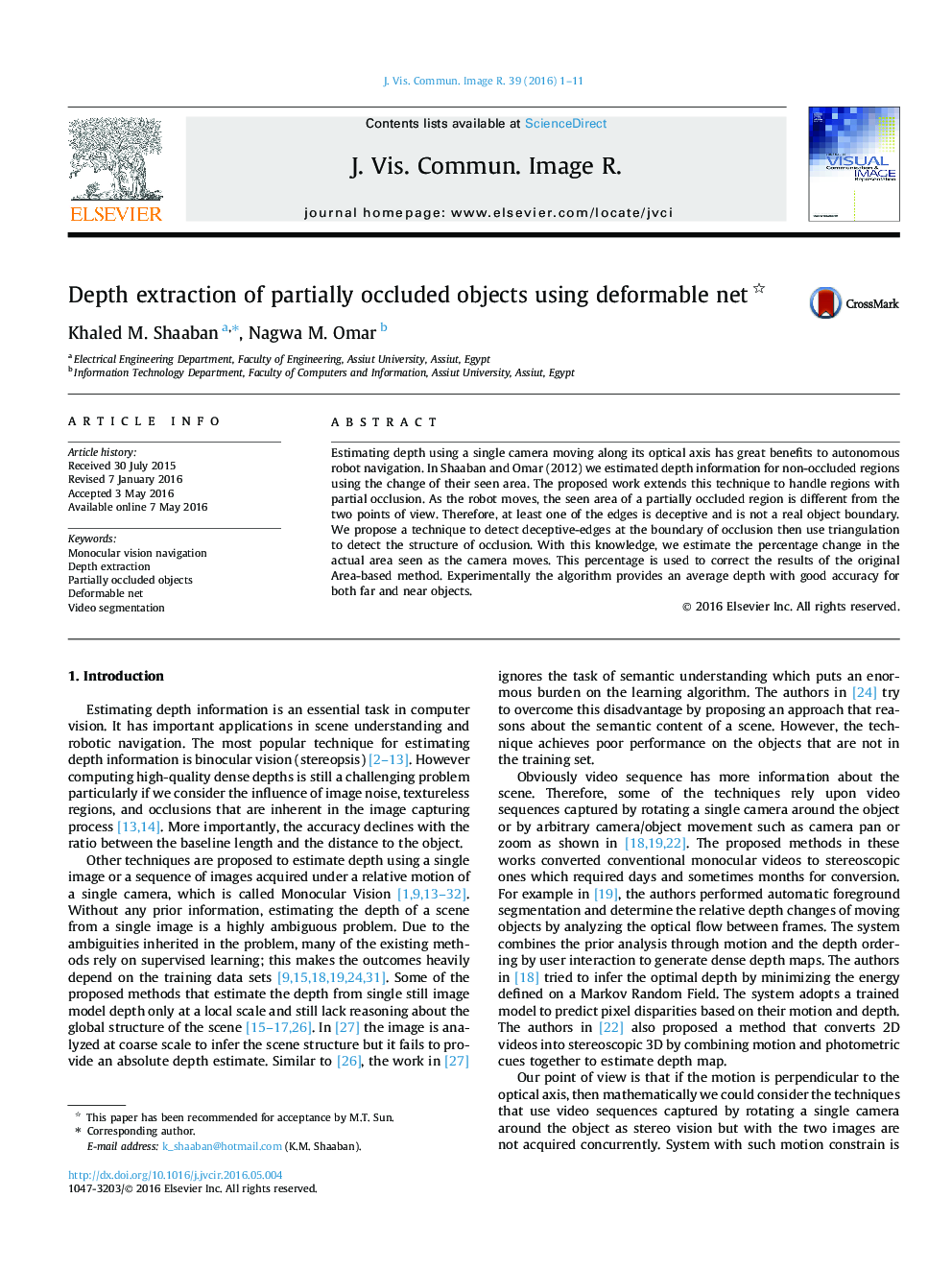| Article ID | Journal | Published Year | Pages | File Type |
|---|---|---|---|---|
| 528708 | Journal of Visual Communication and Image Representation | 2016 | 11 Pages |
•We extend the work in [1] to estimate the depth to partiality occluded objects.•The technique tries to locate real edges that represent real object boundary.•The technique tracks the change in the position of real edges in two frames.•The technique estimates the extra area covered or revealed due to camera movement.•The extra area is used to correct the results of the Area-Based method in [1].
Estimating depth using a single camera moving along its optical axis has great benefits to autonomous robot navigation. In Shaaban and Omar (2012) we estimated depth information for non-occluded regions using the change of their seen area. The proposed work extends this technique to handle regions with partial occlusion. As the robot moves, the seen area of a partially occluded region is different from the two points of view. Therefore, at least one of the edges is deceptive and is not a real object boundary. We propose a technique to detect deceptive-edges at the boundary of occlusion then use triangulation to detect the structure of occlusion. With this knowledge, we estimate the percentage change in the actual area seen as the camera moves. This percentage is used to correct the results of the original Area-based method. Experimentally the algorithm provides an average depth with good accuracy for both far and near objects.
